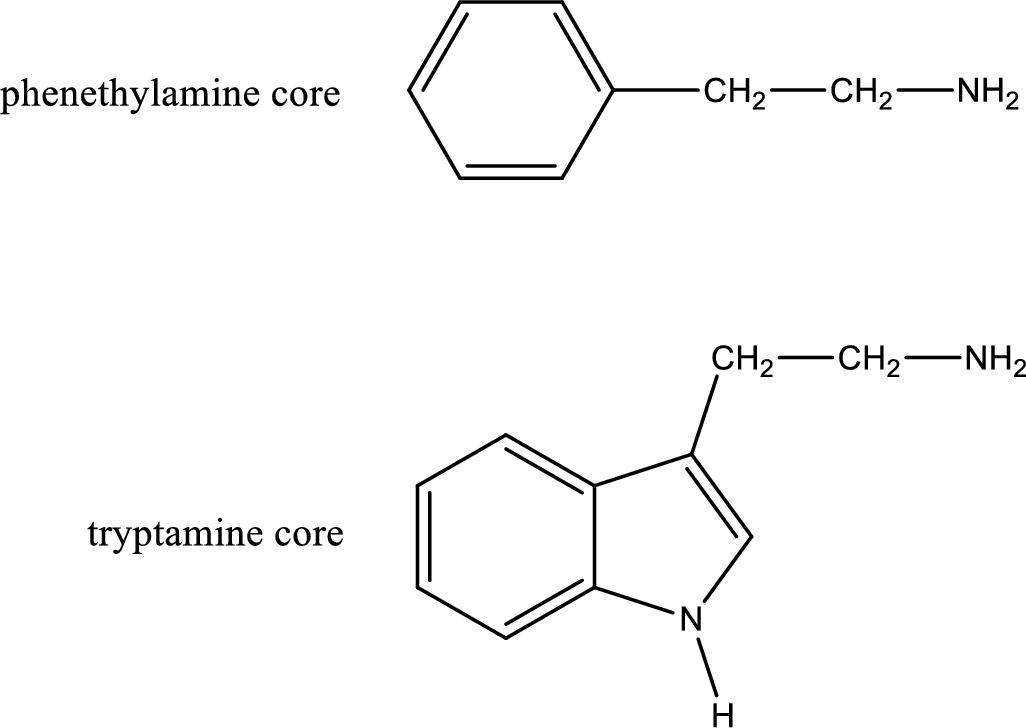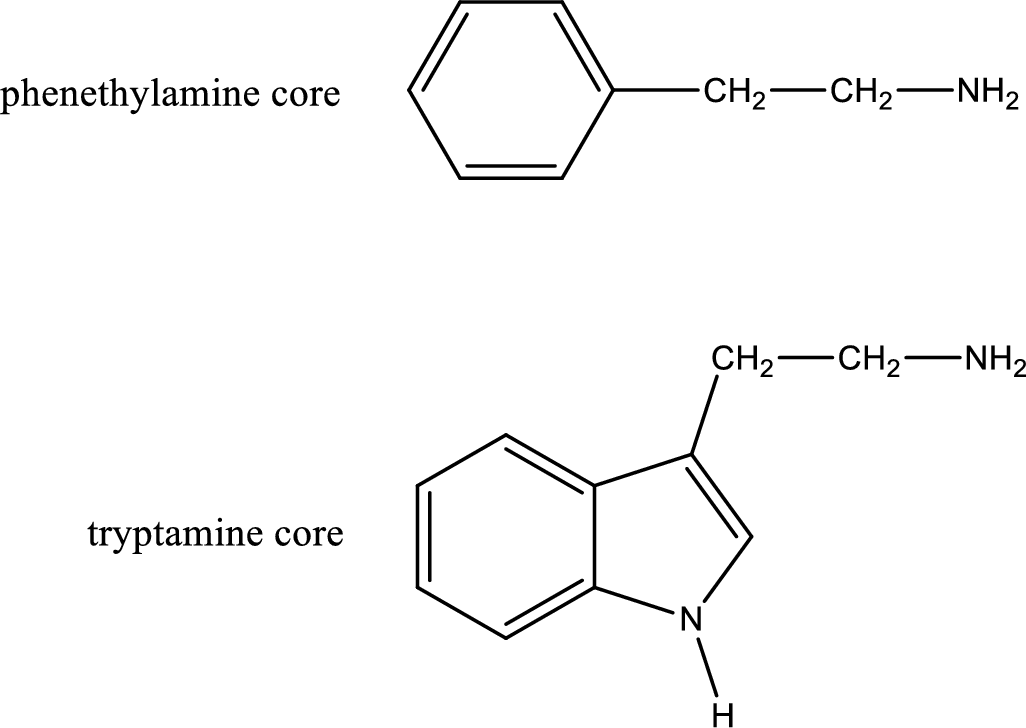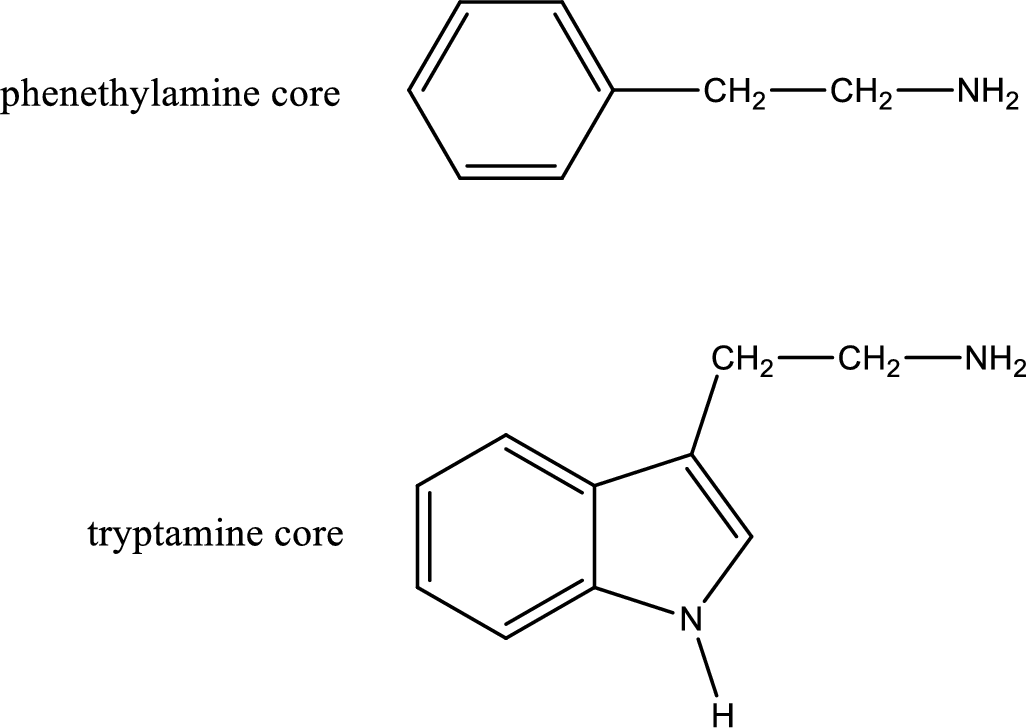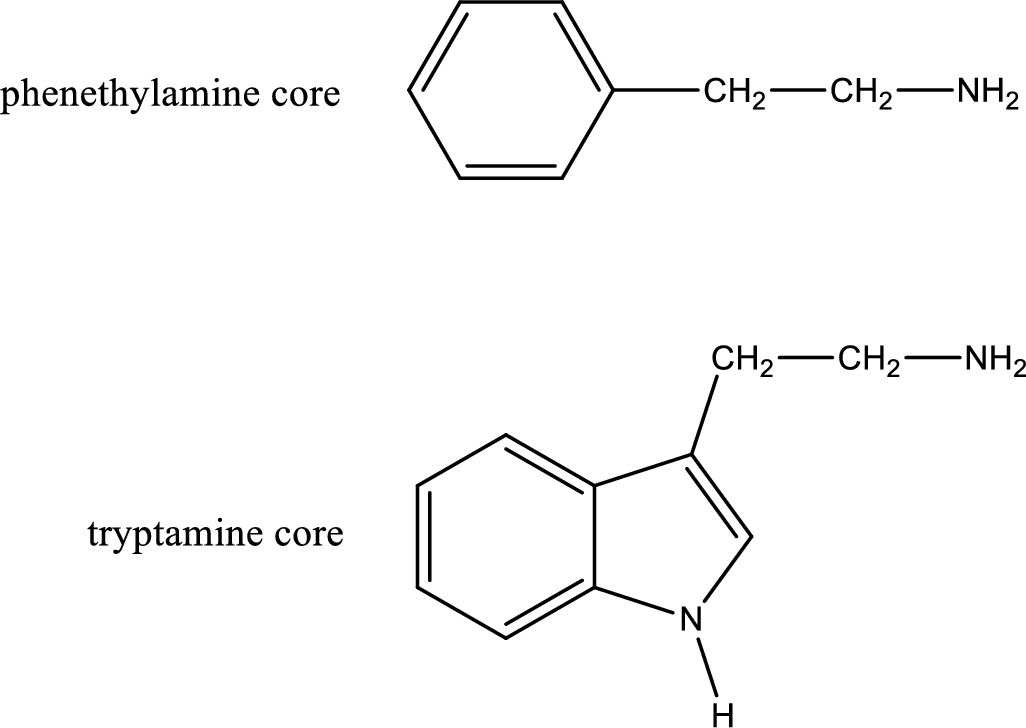
(a)
Interpretation:
Dopamine and serotonin have same tryptamine core or not has to be indicated as true or false.
Concept Introduction:
Generally

There are three types of effects that an amine can exert. They are neurotransmitters, central nervous system stimulants and decongestants. Neurotransmitters are the substances that are present in human body that help in passing impulse of nerves from one cell to another. Central nervous stimulants are the substances that help in speeding up of physical and mental processes. Decongestant is a substance that is used to relieve nasal congestion.
(b)
Interpretation:
Parkinson’s disease is due to the deficiency of dopamine has to be indicated as true or false.
Concept Introduction:
Generally amines are toxic in nature. If a compound contains only amine as its functional group, they will be often toxic. Due to this, in biological systems they are not prevalent. If the same compound contains more than one functional group apart from amine means it can be physiologically active. Important “core” structures that are frequently encountered in polyfunctional amines that have biological effects are tryptamine core and phenethylamine core.

There are three types of effects that an amine can exert. They are neurotransmitters, central nervous system stimulants and decongestants. Neurotransmitters are the substances that are present in human body that help in passing impulse of nerves from one cell to another. Central nervous stimulants are the substances that help in speeding up of physical and mental processes. Decongestant is a substance that is used to relieve nasal congestion.
(c)
Interpretation:
Epinephrine and norepinephrine differs by a methyl group only has to be indicated true or false.
Concept Introduction:
Generally amines are toxic in nature. If a compound contains only amine as its functional group, they will be often toxic. Due to this, in biological systems they are not prevalent. If the same compound contains more than one functional group apart from amine means it can be physiologically active. Important “core” structures that are frequently encountered in polyfunctional amines that have biological effects are tryptamine core and phenethylamine core.

There are three types of effects that an amine can exert. They are neurotransmitters, central nervous system stimulants and decongestants. Neurotransmitters are the substances that are present in human body that help in passing impulse of nerves from one cell to another. Central nervous stimulants are the substances that help in speeding up of physical and mental processes. Decongestant is a substance that is used to relieve nasal congestion.
(d)
Interpretation:
Epinephrine and adrenaline are the names of same compound has to be indicated as true or false.
Concept Introduction:
Generally amines are toxic in nature. If a compound contains only amine as its functional group, they will be often toxic. Due to this, in biological systems they are not prevalent. If the same compound contains more than one functional group apart from amine means it can be physiologically active. Important “core” structures that are frequently encountered in polyfunctional amines that have biological effects are tryptamine core and phenethylamine core.

There are three types of effects that an amine can exert. They are neurotransmitters, central nervous system stimulants and decongestants. Neurotransmitters are the substances that are present in human body that help in passing impulse of nerves from one cell to another. Central nervous stimulants are the substances that help in speeding up of physical and mental processes. Decongestant is a substance that is used to relieve nasal congestion.
Want to see the full answer?
Check out a sample textbook solution
Chapter 6 Solutions
Organic And Biological Chemistry
- What is the final product when hexanedioic acid reacts with 1º PCl5 and 2º NH3.arrow_forwardWhat is the final product when D-galactose reacts with hydroxylamine?arrow_forwardIndicate the formula of the product obtained by reacting methyl 5-chloro-5-oxopentanoate with 1 mole of 4-penten-1-ylmagnesium bromide.arrow_forward
- The temperature on a sample of pure X held at 1.25 atm and -54. °C is increased until the sample boils. The temperature is then held constant and the pressure is decreased by 0.42 atm. On the phase diagram below draw a path that shows this set of changes. pressure (atm) 2 0 0 200 400 temperature (K) Xarrow_forwardQUESTION: Answer Question 5: 'Calculating standard error of regression' STEP 1 by filling in all the empty green boxes *The values are all provided in the photo attached*arrow_forwardpressure (atm) 3 The pressure on a sample of pure X held at 47. °C and 0.88 atm is increased until the sample condenses. The pressure is then held constant and the temperature is decreased by 82. °C. On the phase diagram below draw a path that shows this set of changes. 0 0 200 temperature (K) 400 аarrow_forward

 Chemistry for Today: General, Organic, and Bioche...ChemistryISBN:9781305960060Author:Spencer L. Seager, Michael R. Slabaugh, Maren S. HansenPublisher:Cengage Learning
Chemistry for Today: General, Organic, and Bioche...ChemistryISBN:9781305960060Author:Spencer L. Seager, Michael R. Slabaugh, Maren S. HansenPublisher:Cengage Learning Organic ChemistryChemistryISBN:9781305580350Author:William H. Brown, Brent L. Iverson, Eric Anslyn, Christopher S. FootePublisher:Cengage Learning
Organic ChemistryChemistryISBN:9781305580350Author:William H. Brown, Brent L. Iverson, Eric Anslyn, Christopher S. FootePublisher:Cengage Learning General, Organic, and Biological ChemistryChemistryISBN:9781285853918Author:H. Stephen StokerPublisher:Cengage Learning
General, Organic, and Biological ChemistryChemistryISBN:9781285853918Author:H. Stephen StokerPublisher:Cengage Learning Organic And Biological ChemistryChemistryISBN:9781305081079Author:STOKER, H. Stephen (howard Stephen)Publisher:Cengage Learning,
Organic And Biological ChemistryChemistryISBN:9781305081079Author:STOKER, H. Stephen (howard Stephen)Publisher:Cengage Learning, Chemistry & Chemical ReactivityChemistryISBN:9781337399074Author:John C. Kotz, Paul M. Treichel, John Townsend, David TreichelPublisher:Cengage Learning
Chemistry & Chemical ReactivityChemistryISBN:9781337399074Author:John C. Kotz, Paul M. Treichel, John Townsend, David TreichelPublisher:Cengage Learning





